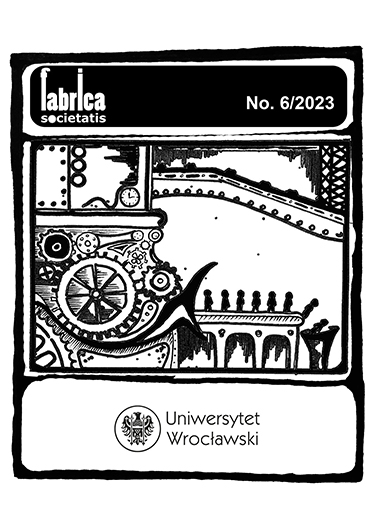

Artykuły

The phenomenon of family violence, which affects the practice of realising family-related values, is analysed on the basis of women’s opinions and declarations. The empirical material analysed in this article is part of a larger whole, which was collected as part of a research and application project aimed at modelling violent behaviour. The research problem guiding the present analysis concerns these patterns of violence and their associations with axionormative structures in terms of family-related values. The study was designed in a quasi-experimental scheme. The characteristics of interest were measured in two target groups, homogeneous by gender. The first group comprised women who completed the survey via the Internet. The second group comprised women under the care of MOPS in Wrocław. The second group is the reference group, as all these women come from families with institutionally diagnosed violence. The research resulted in two levels of analysis. The first refers to the forms of family violence such as quarrels, brawls and fights. The second relates to axionormative structures, which become the background for comparing the level of acceptance of the family as a value in the consciousness of women in so-called normal families, i.e. without recorded violence, and in violent families. The analyses made it possible to distinguish a subgroup within the group of families studied. Due to the risk of violence, this subgroup constitutes an intermediate creation between families in which violent behaviour is “kept” within the constraints of a broadly understood cultural norm and families in which violence breaks bonds and leads to a reconfiguration of axionormative structures. In terms of the latter, the disappearance of the value of the family was not found (in the group of families with institutionally identified violence). On the other hand, there was a reduction in service relationships, resulting, according to the authors, from a redefinition of the family as a structural entity within which certain values are realised.
CBOS (2008). Nie ma jak rodzina. Komunikat z badań 40 [dostęp: 17 lutego 2024]. Dostępny w Internecie: https://www.cbos.pl/SPISKOM.POL/2008/K_040_08.PDF.
CBOS (2013). Rodzina. Jej współczesne znaczenie i rozumienie. Komunikat z badań 33 [dostęp: 17 lutego 2024]. Dostępny w Internecie: https://www.cbos.pl/SPISKOM.POL/2013/K_033_13.PDF.
CBOS (2019). Rodzina. Jej znaczenie i rozumienie. Komunikat z badań 22 [dostęp: 17 lutego 2024]. Dostępny w Internecie: https://cbos.pl/SPISKOM.POL/2019/K_022_19.PDF.
GUS (2022). Sytuacja demograficzna Polski do 2021 r. [dostęp: 5 lutego 2024]. Dostępny w Internecie: https://stat.gov.pl/obszary-tematyczne/ludnosc/ludnosc/sytuacja-demograficzna-polski-do-roku-2021,40,2.html.
GUS (2023). Rocznik Demograficzny [dostęp: 17 lutego 2024]. Dostępny w Internecie: https://stat.gov.pl/obszary-tematyczne/roczniki-statystyczne/roczniki-statystyczne/rocznik-demograficzny-2023,3,17.html.
Krys, K., Capaldi, C.A., Zelenski, J.M., Park, J., Nader, M., Kocimska-Zych, A. Kwiatkowska, A., Michalski, P., Uchida, Y. (2021). Family well-being is valued more than personal well-being: A four-country study. Current Psychology 40, p. 3332–3343 [dostęp: 5 lutego 2024]. Dostępny w Internecie: https://doi.org/10.1007/s12144-019-00249-2.
Miedzik, M., Godlewska-Szurkowa, J. (2014). Badania porównawcze oraz diagnoza skali występowania przemocy w rodzinie wśród osób dorosłych i dzieci, z podziałem na poszczególne formy przemocy wraz z opisem charakterystyki ofiar przemocy i sprawców. Raport cząstkowy [dostęp: 7 lutego 2024]. Dostępny w Internecie: https://www.gov.pl/web/rodzina/diagnozy-zjawiska-przemocy-w-rodzinie.
Rode, D. (2005). Przemoc wewnątrzmałżeńska – osobowościowe, sytuacyjne i motywacyjne uwarunkowania przemocy. W: M. Ledzińska, G. Rudkowska, L. Wrona (red.), Psychologia współczesna. Oczekiwania i rzeczywistość. Kraków: Wydawnictwo Naukowe Akademii Pedagogicznej, s. 63–76.
Szukalski, P. (2016). Małżeństwa i rozwody. W: Sytuacja demograficzna Polski. Raport 2015– 2016, Warszawa: Rządowa Rada Ludnościowa, s. 76–97.

This work is licensed under a Creative Commons Attribution-NonCommercial-NoDerivatives 4.0 International License.